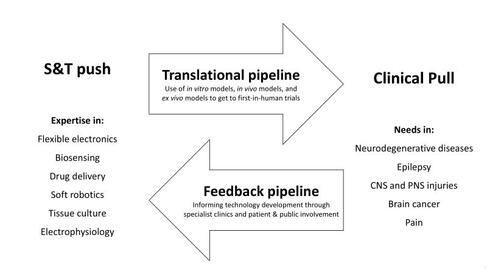Our research is translational

We use a push-pull model, where advances in science and engineering follow a translational pipeline to the clinic, while clinical needs inform science and technology development. Our work covers neuroengineering, biohybrid implants, targeted drug delivery, and wearable systems.
